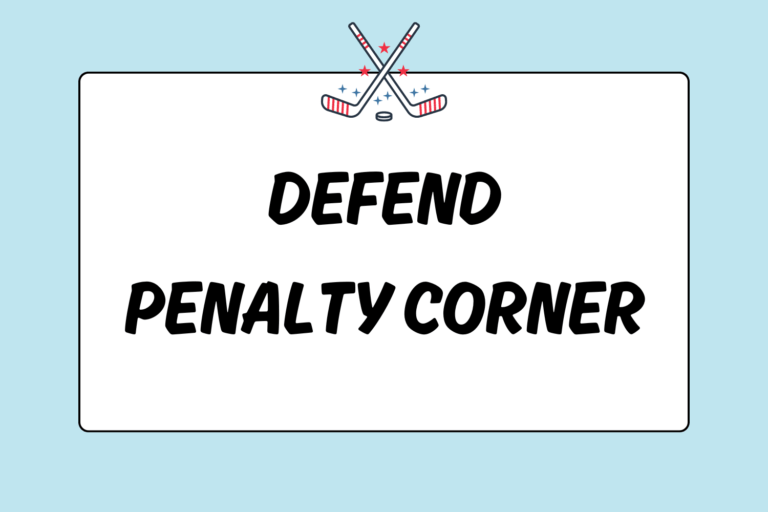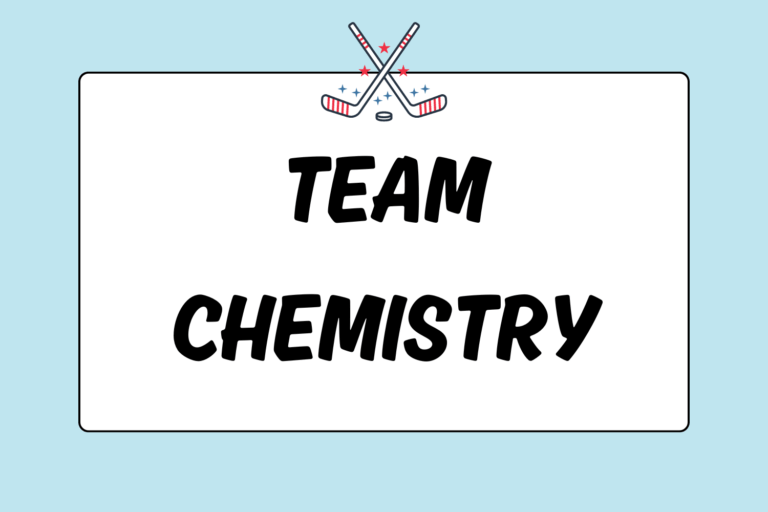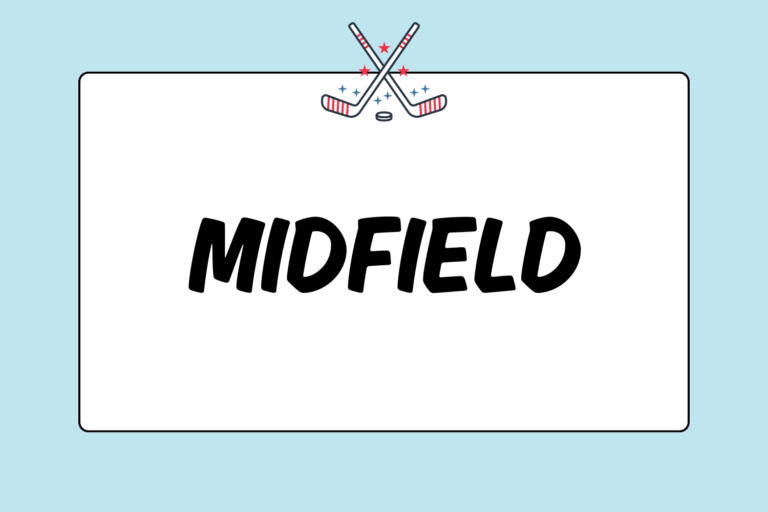At the beginning level of field hockey, your main focus will be on stopping the ball and then continuing play. At the intermediate and advanced levels, the ball is almost always received on the run and hardly ever comes to a complete stop. But don’t worry, you’ll get there! First things first, you need to know how to stop the ball. All stops require four basic fundamentals:
- Watching the ball
- Proper body positioning
- Cushioning the ball
- Using your stick to stop the ball
This guide outlines the basic fundamentals that you need to learn to stop the ball. It also details the two types of stops you’ll use most frequently on grass and turf surfaces. Follow along closely, and always make sure to stop the ball with the flat side of your stick.
Watch the Ball
This step is key. When the ball is approaching, you have to be able to predict its course and run to that spot. That is, do not run straight at the ball. Run where the ball is going. You will receive the ball in front of your body, with your stick perpendicular to its path (straight on). Always keep your eye on the ball — not your stick. By watching the ball, you will be able to see how the ball is rolling — fast, slow, smoothly, bouncing, etc. — and be better prepared to predict its course. After some practice, you will be able to easily determine where the ball is going and where to position your stick.
Body Positioning
How you position your body is also very important. At the beginning stages of the game, always face the incoming ball and get your body completely behind your stick. If you are positioned behind your stick and you miss the ball, you may still be able to stop the ball with your body. You will likely receive a penalty call for this, but at least you’ll have stopped your opponents’ momentum.
Keep your back straight and your stance low and balanced. For stops to your right side (strong side), position your right foot slightly back for support. Bend your legs at the knees to “get low.” How low you get depends on the stop. For upright stops, your legs can be slightly bent. However, you may want to lower your stance even further for flat stops. You arm and stick positioning will depend on the direction of the ball and type of stick stop (more below).
Cushion the Ball
When you stop a ball, remember that the ball is moving. If you stop the ball head-on, against a perfectly upright surface (like your stick), the ball is likely to pop up. So, you have to cushion the ball. In order to cushion the ball, you have to “give” a little. That is, you cannot keep the stick stiff. Let the stick move with the ball and absorb its force. There are two simple movements that will help you cushion the ball:
- For upright stops: Angle your stick forward so that the top of the stick angles down toward the ground (this will also help trap the ball).
- For flat stops: Angle the shaft of the stick forward.
To “give a little,” inch the stick back on impact — this is the “cushion.” You will do this for both upright and flat stops.
Hot Tip: Keep the Ball Down
Not only will angling the stick down help you cushion the ball, but it will also help you reduce your chances of accidently hitting the ball in the air. If your stick is angled backwards on any stop, the ball will either lift into your body or be flicked into the air by your stick. You do not want this. So, work the angle of your stick to keep the ball down.
Stick Stopping Styles
How your stick is positioned — the stick stop style — depends on the surface and course of the ball. The upright stops works for stopping bouncing balls, while the flat turf stop is used for stopping smoothly rolling balls. These are the basic stops. Perfect these and you’ll be on your way to developing more advanced stopping skills!
Upright Stops on Grass
On grass fields, the ball will bounce a lot and it can be a little difficult to predict its direction. The ball may hit a bump in the dirt and take an unexpected turn. Or worse, it could hit a divot and fly into the air — a majority of high balls result from uneven surfaces.
On grass surfaces, use the basic technique for stopping. Know that the ball can be unpredictable, so be light on your toes. This means that you need to be ready to pivot and move from side-to- side, depending on where the ball bounces. The basic stop is an upright, strong stick. The stick is perpendicular to the ground and the ball is stopped to the right of the body with the flat side of the stick, using the bottom of the stick (the hook):
- Place your hands in the basic grip.
- Move your feet and body to face the incoming ball.
- Keep the stick upright (handle up and toe or hook down). The bottom of the stick is on the ground and the handle is in the air. The stick should be perpendicular to the ground.
- Stay balanced by bending your knees.
- Run towards the ball while keeping the bottom of your stick low to the ground.
- Make contact with the ball just outside your right foot and in front of your body. You will use the bottom (hook) of your stick to make the stop.
- Cushion the ball by angling the top of the stick forward so the entire stick is angled towards the ground. Make the stick “give” a little at contact.
This stop is popular on grass surfaces because if the ball hits a divot and lifts, you can legally use the shaft of the stick to stop the ball. With this stop, you can cover the area in front of you and are prepared for unexpected air balls.
Flat Stops on Turf
Compared to grass fields, turf fields are quite smooth. The balls roll along the ground a lot easier. While you may not have to worry about re-direction and high balls from natural bumps and divots on the field, you have to be wary of possible deflections from other players’ sticks.
For a flat turf stop, the stick is placed parallel to the ground and covers about three feet of the area in front of you.
- Place your hands in the basic grip.
- Position your body in line with the ball’s path.
- Stay balanced by bending your knees. Get low, but stay comfortable.
- Place the stick parallel to the ground with the lower half, hook included, touching the ground.
- Place the stick in front of your body and slightly toward the right.
- Make contact with the ball at the right of your body with the flat face of the stick.
- Receive the ball either on the shaft or the bottom of the stick.
- Cushion the ball by angling the shaft of your stick (toe edge side of the shaft) forward. On contact, give a little.
This type gives you a larger receiving area. Remember: Angle your stick down. Otherwise, it might deflect the ball into the air. Make sure to keep a strong, firm grip on the stick.
Stop It!
Stopping the ball can be frustrating at first. The best way to improve is to work on your hand-eye coordination. It also helps to pass the ball back-and-forth with a fellow teammate and work on fundamentals — not how fast you can do it. After you perfect stationary stops, you can work on running towards the ball and receiving it on the run. Now, grab a partner and get to it!





